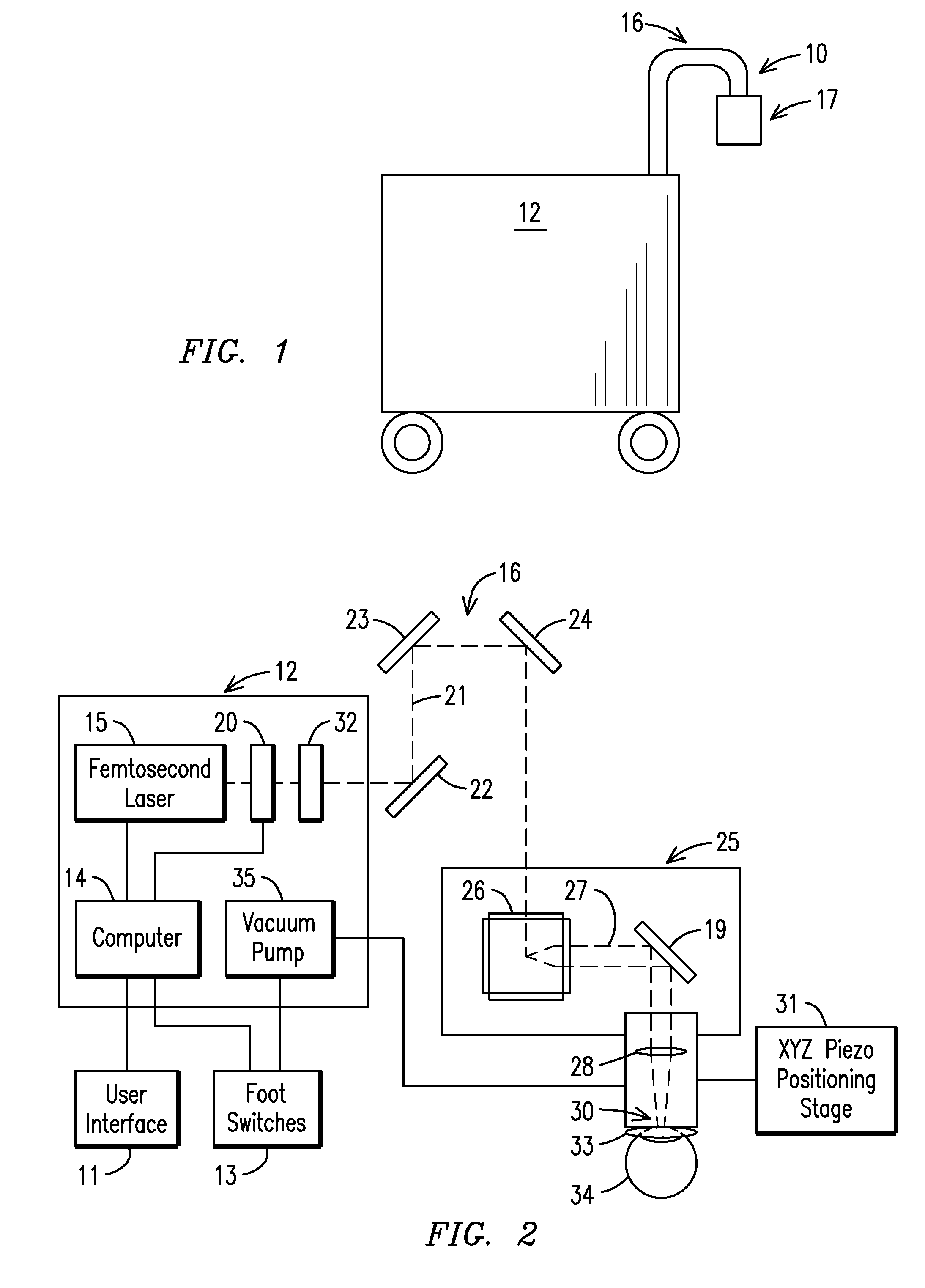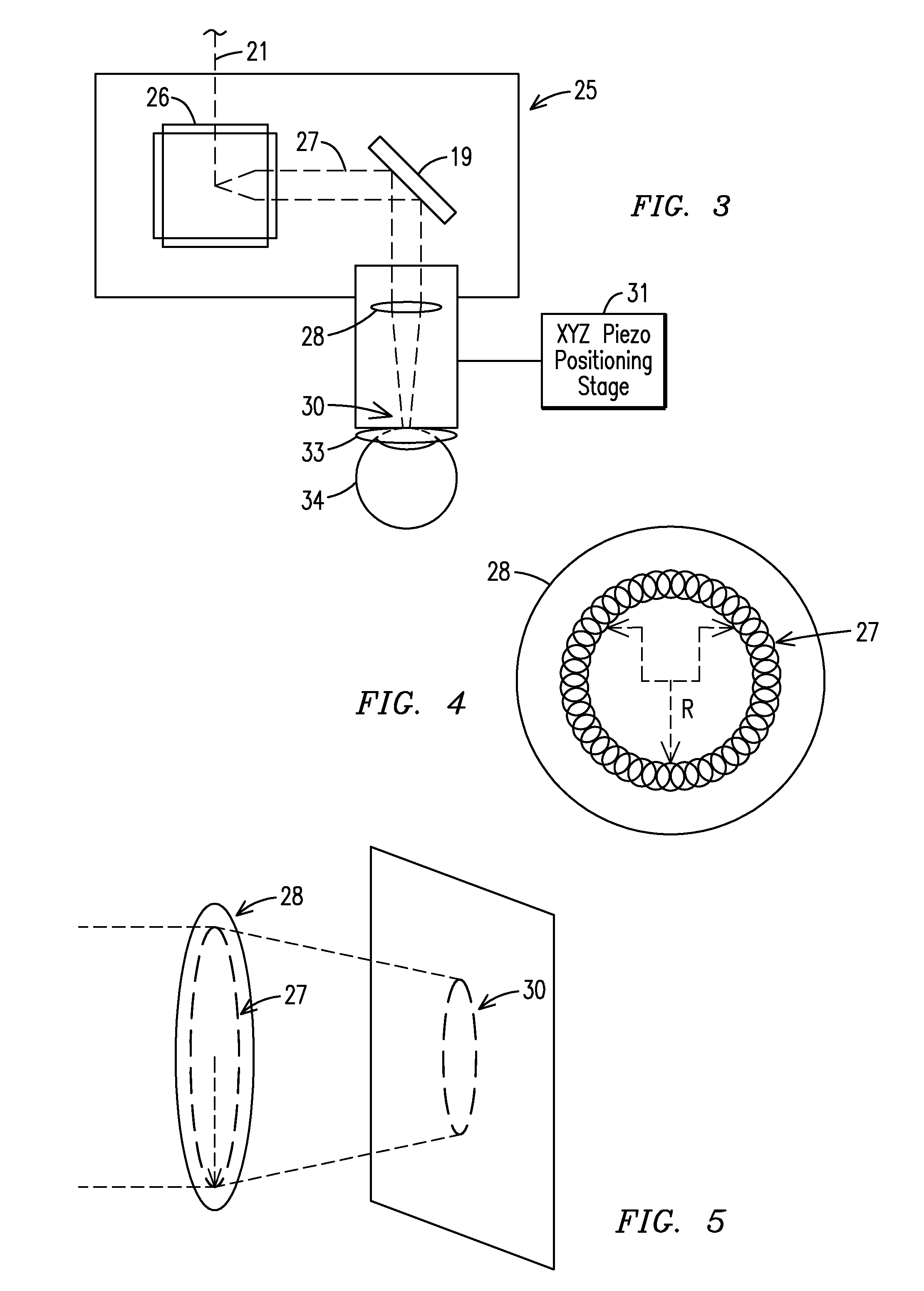Ophthalmological laser method and apparatus
a laser and ophthalmological technology, applied in the field of femtosecond laser ophthalmological equipment and methods, can solve the problems of irregular flaps, buttonhole flaps (in very steep corneas), free caps (in very flat corneas), and several limitations currently associated with a femtosecond laser system. the overall size of the current femtosecond laser system is much larger than the size of mechanical microkeratome systems
- Summary
- Abstract
- Description
- Claims
- Application Information
AI Technical Summary
Benefits of technology
Problems solved by technology
Method used
Image
Examples
Embodiment Construction
[0016]A laser ophthalmological surgery apparatus 10 in accordance with the present invention in FIGS. 1 and 2 of the drawings includes a user interface 11 connected to a main cabinet 12. A foot switch 13 and the user interface 11 are connected to a computer 14 inside the main cabinet 12. Within the main cabinet 12, laser pulses are generated with a femtosecond laser 15 that is guided through an attached rotating mirror set module 16. The ophthalmological apparatus 10 has a main cabinet 12 and a hand piece module 17 connected to either end of a rotating mirror set module 16. A laser beam expander 20 is positioned in the main cabinet 12 to enlarge the laser beam spot size before it is directed through the rotating mirror set module 16. The laser beam 21 passes through the rotating mirror set module 16 having mirrors 22, 23 and 24, even though it will be understood that more than three mirrors can be used without departing from the spirit and scope of the invention. The laser beam then...
PUM
 Login to View More
Login to View More Abstract
Description
Claims
Application Information
 Login to View More
Login to View More - R&D
- Intellectual Property
- Life Sciences
- Materials
- Tech Scout
- Unparalleled Data Quality
- Higher Quality Content
- 60% Fewer Hallucinations
Browse by: Latest US Patents, China's latest patents, Technical Efficacy Thesaurus, Application Domain, Technology Topic, Popular Technical Reports.
© 2025 PatSnap. All rights reserved.Legal|Privacy policy|Modern Slavery Act Transparency Statement|Sitemap|About US| Contact US: help@patsnap.com



